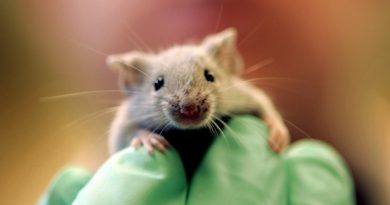Excerpts from UBC’s student newspaper, the UBYSSEY in 2008
EXCERPTS FROM JANUARY 25, 2008 UBYSSEY ARTICLE
On January 25, 2008, the UBC student newspaper, the UBYSSEY, ran a cover story, “Cruel Intentions? Animal Testing at UBC,” that included some startling and disturbing findings. I’ve included excerpts from UBYSSEY reporter, Marc Serpa Francoeur’s 2008 piece. In his article, Francoeur wrote:
“UBC is one of the largest bio-medical campuses in the country. The ACC [Animal Care Center] distributes some 100,000 creatures, both large and small, to dozens of UBC affiliated research projects.”
“According to the Canadian Council on Animal Care (CCAC), the numbers of animals used in ‘science’ in Canada have increased significantly in the past decade, with over 2.5 million animals in 2006, up from less than 1.5 million in 1997. In fact, 2006 saw the highest number of animals used in research since 1975. As the home of a sizable and rapidly expanding industry of animal experimentation, UBC appears to be at the forefront of these trends.”
“…UBC maintains over thirty animal care facilities across its campus and throughout the rest of the city.”
“Harvey Clark describes a recent shift in Canadian research from the use of companion to farm animals and from larger to smaller animals in general; a process he characterizes as ‘refinement’ of research practices. ‘Pigs are probably the main large animal that’s used,’ says Harvey Clark. ‘We haven’t seen dogs used in research at UBC since 1992.'”
“While the wide majority of the animals used each year are rats, mice, and fish, there are over 5,000 subjects from other species like sheep, pigs, rabbits, cats, and non-human primates. Harvey Clark views the use of these animals in research as ‘consumptive use’ and equates it to the use of animals in food production.”
“According to the CCAC, experiments in Canada are divided into four different ‘Categories of Invasiveness.’ In 2006 while about one third or over 800,000 experiments caused ‘little to no discomfort or stress,’ another third caused ‘moderate to severe distress or discomfort.’ Additionally, over 7 percent, some 180,000 animals, were subjected to the highest level of invasiveness, ‘severe pain near, at, or above the pain tolerance threshold of unanaesthetized conscious animals.’ This quantity is more than double proportionately and well over three times in number than the mere 55,000 or 3 percent of animals used in this way in 1998…”
“As for the nature of the experiments, while some 30 percent were related to medical purposes in 2006, roughly 10 percent, some 238,000 animals were used in the ‘regulatory testing’ of non-medicinal products. While the number of animals consumed for this purpose has been relatively consistent over the past decade, the proportion subjected to the highest level of invasiveness has risen from less than 20 percent in 1998, for instance, to nearly 60 percent in 2006. All told, non-medicinal product testing represented well over 60 percent of the total number of animals subjected to the highest level of invasiveness in 2006.”
“Most notable perhaps, has been the continued use at UBC of non-human primates in neurological experiments. Recently, the rhesus macaque, an Asian species, has been used extensively in Parkinson’s disease research. The monkeys are typically subjected to brain damage which models the degenerative disease and then treated with various methaphetamine and electroconvulsive shock therapies.”

